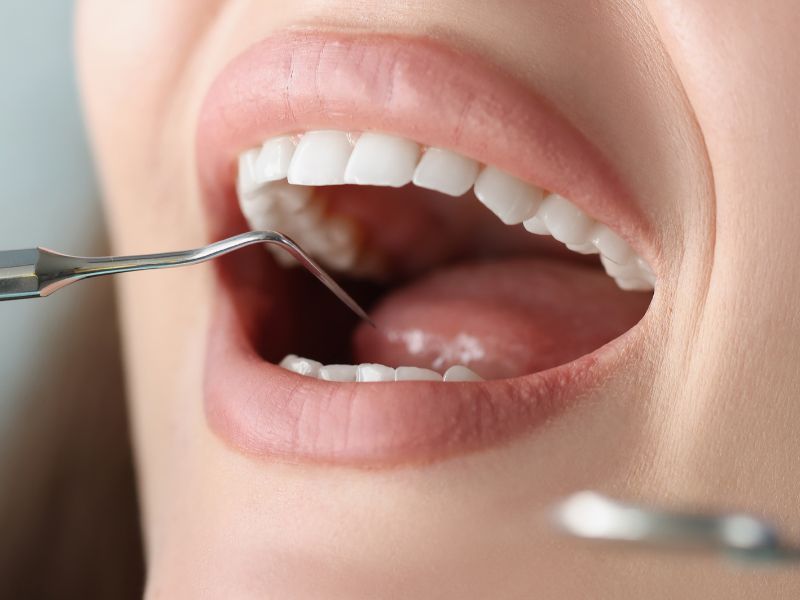According to data from the National Institute of Statistics (INEN), 21% of the population is affected by cavities. Undoubtedly, it is one of the most common oral pathologies in society.
For this reason, at Gross Dentists we will dedicate this article to this very relevant and interesting topic. Specifically we will focus on interproximal caries, which are those located between the teeth. These cavities, also called interdental, usually affect more than one tooth and are usually more harmful than others located in other areas.
Want to know more? Continue reading!
What is a cavity?
To properly understand this issue of interest to oral health, it is necessary to know what cavities are.
Cavities are permanently damaged areas on the surface of the teeth and are seen as holes or openings. In this sense, it should be noted that this dental erosion occurs due to an accumulation of bacterial plaque in this area.
Treating a cavity problem in time is essential to preserve oral health, because in the worst case can lead to severe pathologies and even dental loss.
What are the characteristics of interproximal caries?
Returning to the topic under discussion, interproximal caries, we must affirm that among its most significant features stands out its location. As we mentioned at the beginning of the text, interdental caries are located between the teeth, being a more inaccessible space and more difficult to clean with daily dental brushing.
In addition, it is also important to know that tooth enamel is losing its thickness, which means that they can advance and expand more quickly.
On the other hand, in patients who have dental crowding this problem is accentuated and in patients who have fixed orthodontics it is more difficult to carry thorough cleaning between the teeth.
What are the causes of this type of cavity?
The main cause of interproximal caries is the accumulation of bacteria, which results in tartar and bacterial plaque.
For this reason, it is very important to have a good oral hygiene habit. Brushing should be done three times a day, after each meal and lasting about 2 minutes.
Treatments to combat interproximal caries
Many patients notice that they have interproximal caries when they have pain or tenderness. For this reason, it is essential to consult regularly, since the specialist will be able to determine whether cavities exist or not.
Radiographs and oral examinations are used to diagnose interdental caries. If the patient has this pathology, one of the following two treatments will be started:
Dental remineralization
Fluoride remineralization is performed if tooth decay is small or has been detected early.
Caries extraction
If the tooth decay is deeper or more advanced, it will be necessary to remove the affected dental area and rebuild the tooth with the relevant material.
Go to our dental clinic to preserve your oral health
If you want more information about interproximal caries or any of our dental treatments (orthodontic treatments, dental implants, endodontics, dental veneers, professional cleanings, gum grafts, among others)which preserve your health or dental aesthetics, we invite you to contact us directly.
Gross Dentists specialists will be happy to help and assist you throughout the process!
We want to see you smile!
Ortodoncista especializada en el sistema de ortodoncia invisible, extensa trayectoria profesional y un gran número de pacientes satisfechos con los resultados obtenidos tras la finalización de su tratamiento.


